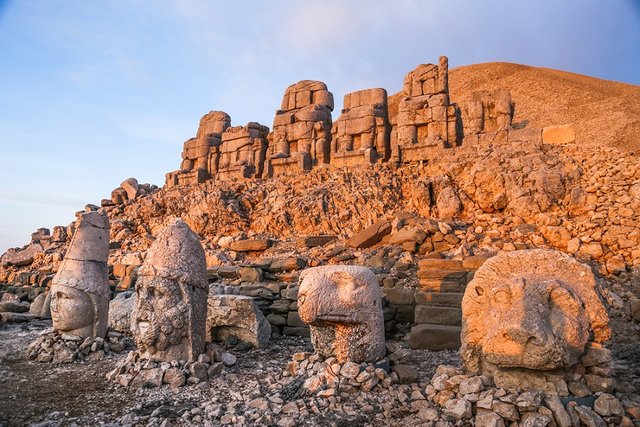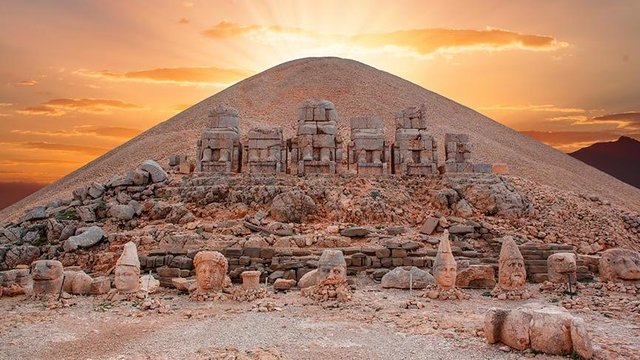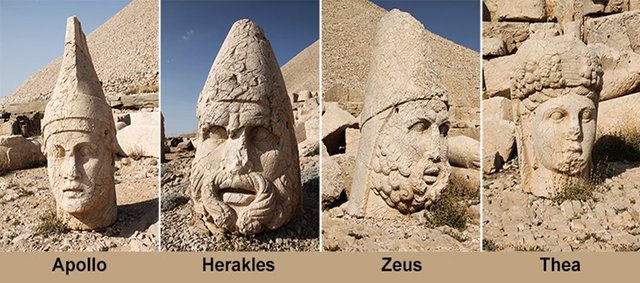TURKEY MOUNT NEMRUT

Nemrut or Nemrud is a 2,134-metre-high (7,001 ft) mountain in southeastern Turkey, notable for the summit where a number of large statues are erected around what is assumed to be a royal tomb from the 1st century BC.

The mountain lies 40 km (25 mi) north of Kahta, near Adıyaman. In 62 BC, King Antiochus I Theos of Commagene built on the mountain top a tomb-sanctuary flanked by huge statues 8–9-metre-high (26–30 ft) of himself, two lions, two eagles and various Greek, Armenian, and Medes gods, such as Zeus-Aramazd or Oromasdes (associated with Zoroastrian god Ahura Mazda), Hercules-Vahagn, Tyche-Bakht, and Apollo-Mihr-Mithras. These statues were once seated, with names of each god inscribed on them. The heads of the statues have at some stage been removed from their bodies, and they are now scattered throughout the site.
The pattern of damage to the heads (notably to noses) suggests that they were deliberately damaged as a result of iconoclasm. The statues have not been restored to their original positions. The site also preserves stone slabs with bas-relief figures that are thought to have formed a large frieze. These slabs display the ancestors of Antiochus, who included Armenians, Greeks and Persians.
The same statues and ancestors found throughout the site can also be found on the tumulus at the site, which is 49-metre-tall (161 ft) and 152 m (499 ft) in diameter. It is possible that the tumulus was built to protect a tomb from tomb-robbers since any excavation would quickly fill with loose rock. The statues appear to have Greek-style facial features, but Armenian clothing and hair-styling.The western terrace contains a large slab with a lion, showing an arrangement of stars and the planets Jupiter, Mercury and Mars. The composition was taken to be a chart of the sky on 7 July 62 BC. This may be an indication of when construction began on this monument. The eastern portion is well preserved, being composed of several layers of rock, and a path following the base of the mountain is evidence of a walled passageway linking the eastern and western terraces. Possible uses for this site are thought to have included religious ceremonies, owing to the astronomical and religious nature of the monument.
